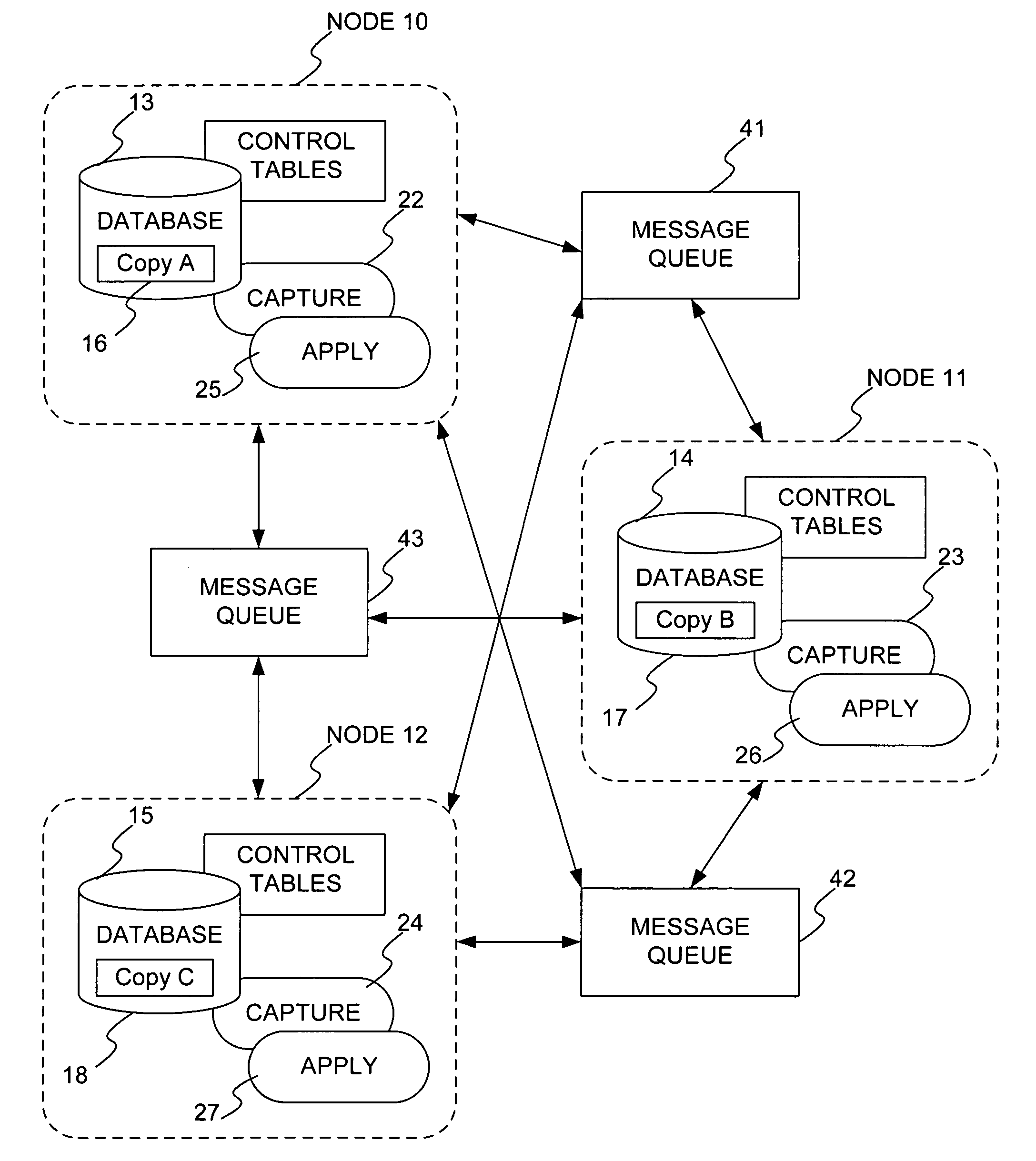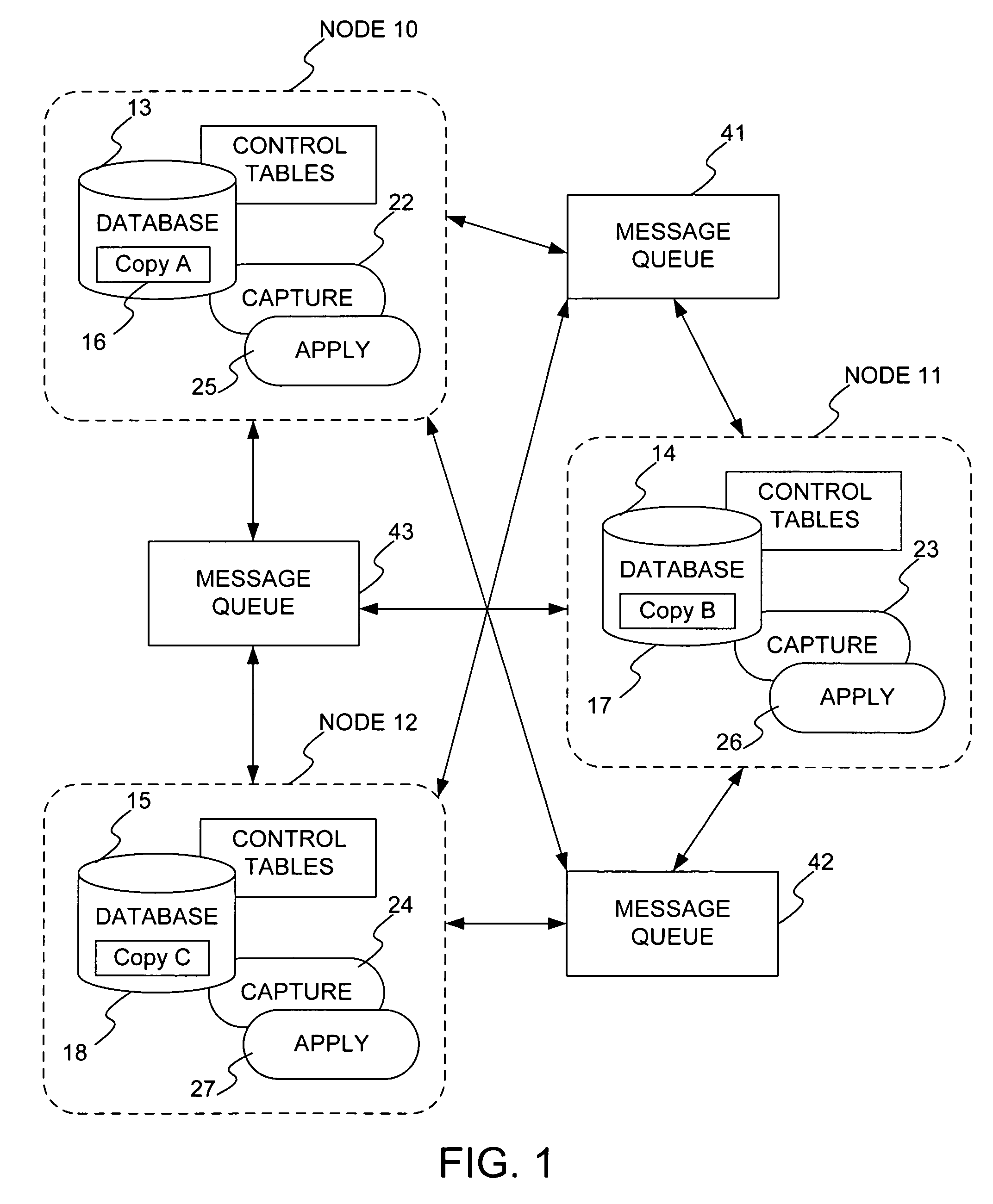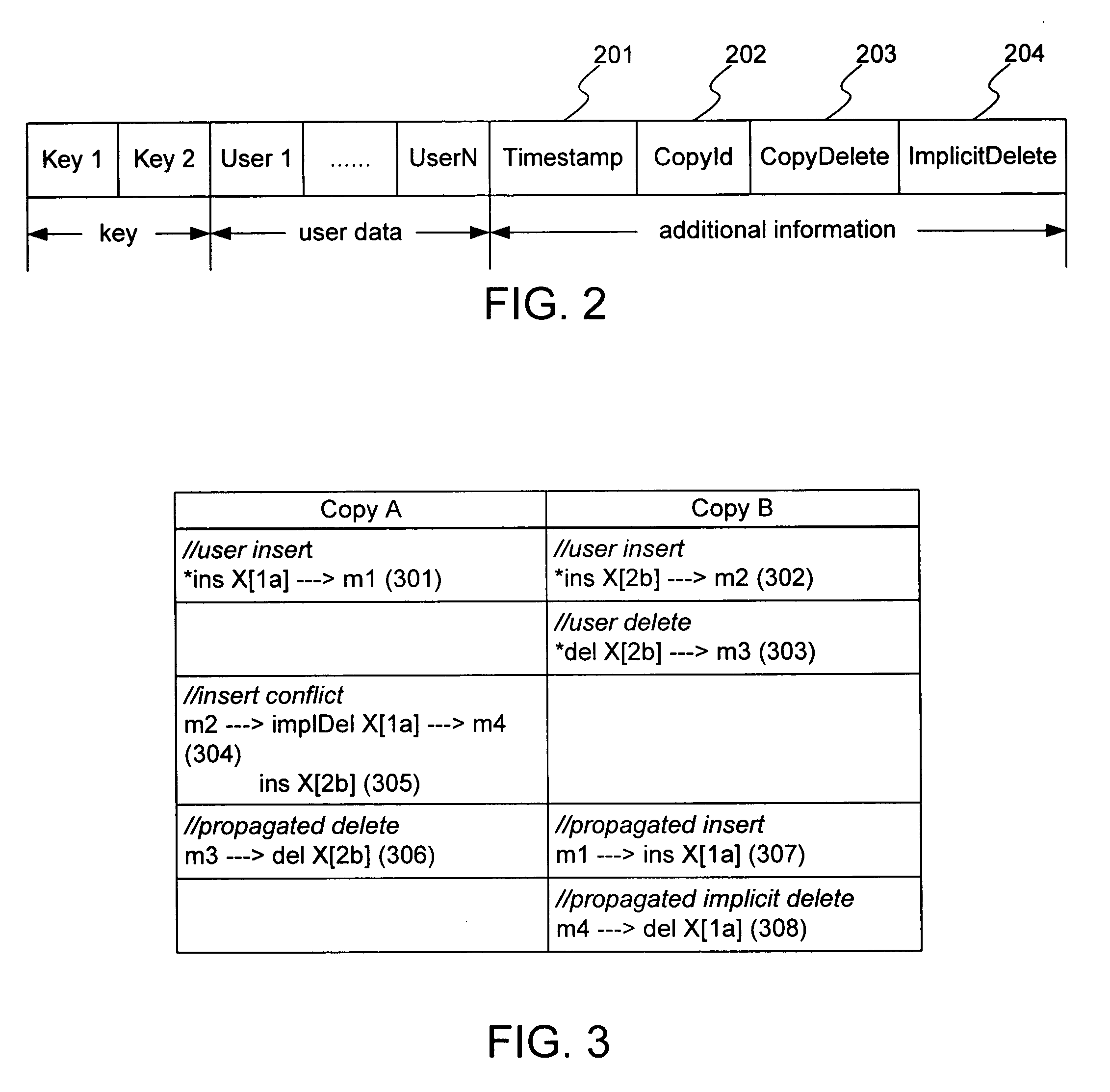Asynchronous peer-to-peer data replication
a peer-to-peer, data replication technology, applied in the field of asynchronous peer-to-peer data replication, can solve the problems of not ensuring that all copies of the table are available, synchronous change propagation introduces substantial messaging and synchronization costs, and cannot guarantee the effect of all copies of the tabl
- Summary
- Abstract
- Description
- Claims
- Application Information
AI Technical Summary
Benefits of technology
Problems solved by technology
Method used
Image
Examples
case 1
[0152] [old=copy, no new] This is the no conflict case. The key and non-key columns of the old key's row are updated without worrying about implicit deletes or creating delete tombstones. A delete tombstone for the new key and Timestamp, however, is checked.
case 2
[0153] [old>copy, no new] This case results in a delete conflict and an implicit delete of the existing row in the target table copy. A delete tombstone for the old key with old Timestamp and old CopyId is created if the old CopyId is not the CopyId assigned to the target table copy, and the implicit delete is propagated if the existing row's CopyId is the CopyId assigned to the target table copy. A delete tombstone for the new key and Timestamp is also checked. The conflict in this case is not reported.
case 3
[0154] [old
PUM
 Login to View More
Login to View More Abstract
Description
Claims
Application Information
 Login to View More
Login to View More - R&D
- Intellectual Property
- Life Sciences
- Materials
- Tech Scout
- Unparalleled Data Quality
- Higher Quality Content
- 60% Fewer Hallucinations
Browse by: Latest US Patents, China's latest patents, Technical Efficacy Thesaurus, Application Domain, Technology Topic, Popular Technical Reports.
© 2025 PatSnap. All rights reserved.Legal|Privacy policy|Modern Slavery Act Transparency Statement|Sitemap|About US| Contact US: help@patsnap.com



